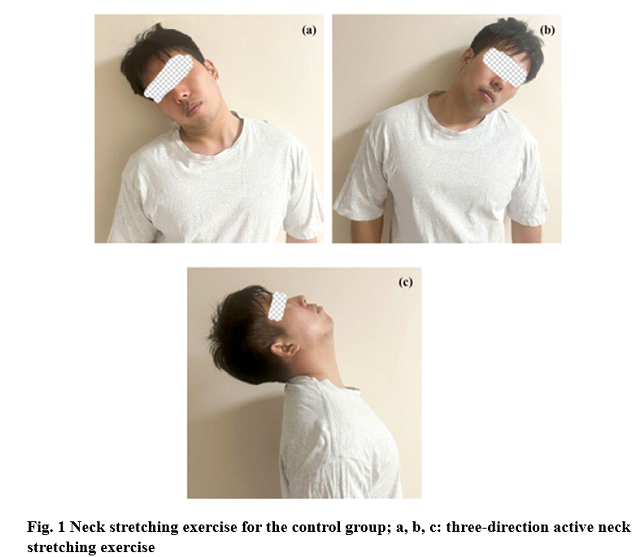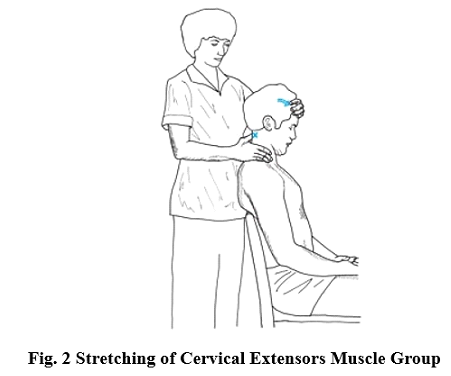Clinical Case Reports and Clinical Study
OPEN ACCESS | Volume 12 - Issue 5 - 2025
ISSN No: 2766-8614 | Journal DOI: 10.61148/2766-8614/JCCRCS
Swarup Ghosh
MPT (Orthopedics), Maharishi Markandeshwar Institute of Physiotherapy and Rehabilitation, Maharishi Markandeshwar (Deemed to be University), Mullana, Ambala, Haryana, India PIN 133207.
*Corresponding author: Swarup Ghosh, MPT (Orthopedics), Maharishi Markandeshwar Institute of Physiotherapy and Rehabilitation, Maharishi Markandeshwar (Deemed to be University), Mullana, Ambala, Haryana, India PIN 133207.
Received: April 09, 2025
Accepted: April 20, 2025
Published: April 25, 2025
Citation: Swarup Ghosh. (2025) “Letter to Editor on ‘Effect of Long-Term Cervical Extensor Exercise Program on Functional Disability, Pain Intensity, Range of Motion, Cervical Muscle Mass, and Cervical Curvature In Young Adult Population With Chronic Non-Specific Neck Pain: A Randomized Controlled Trial’.” Clinical Case Reports and Clinical Study, 12(1); DOI: 10.61148/2766-8614/JCCRCS/202.
Copyright: © 2025 Swarup Ghosh. This is an open access article distributed under the Creative Commons Attribution License, which permits unrestricted use, distribution, and reproduction in any medium, provided the original work is properly cited.
We have recently perused the scholarly article authored by Yao Zhang, Wancheng Lin, Meng Yi, Jipeng Song, and Lixiang Ding, entitled "Effect of long-term cervical extensor exercise program on functional disability, pain intensity, range of motion, cervical muscle mass, and cervical curvature in young adult population with chronic non-specific neck pain: a randomized controlled trial" published in the prestigious Journal of Orthopaedic Surgery and Research.1 We wish to extend my commendations to the authors for the acceptance of their paper.
The authors' innovative approach to treating both groups—stretching versus strengthening in chronic non-specific neck pain across various outcome measures over an extended duration is pioneering and represents a novel endeavor, marking it as the first of its kind in this context. However, we have observed several shortcomings that should be considered in forthcoming studies.
Firstly, the control group's stretching program lacks justification for adhering to standard stretching techniques. It does not specify the duration of holds, and the exercises demonstrated in Figure 1 (a), (b), and (c) consist only of general cervical active range of motion movements, rather than proper stretching techniques, failing to specifically target the cervical extensor muscles.
To the Editor,
We have recently perused the scholarly article authored by Yao Zhang, Wancheng Lin, Meng Yi, Jipeng Song, and Lixiang Ding, entitled "Effect of long-term cervical extensor exercise program on functional disability, pain intensity, range of motion, cervical muscle mass, and cervical curvature in young adult population with chronic non-specific neck pain: a randomized controlled trial" published in the prestigious Journal of Orthopaedic Surgery and Research.1 We wish to extend my commendations to the authors for the acceptance of their paper.
The authors' innovative approach to treating both groups—stretching versus strengthening in chronic non-specific neck pain across various outcome measures over an extended duration is pioneering and represents a novel endeavor, marking it as the first of its kind in this context. However, we have observed several shortcomings that should be considered in forthcoming studies.
Firstly, the control group's stretching program lacks justification for adhering to standard stretching techniques. It does not specify the duration of holds, and the exercises demonstrated in Figure 1 (a), (b), and (c) consist only of general cervical active range of motion movements, rather than proper stretching techniques, failing to specifically target the cervical extensor muscles.

Insert Figure 1 about here
To stretch the cervical extensors, the authors could have instructed the patient should be seated and perform a chin tuck while the therapist applies downward pressure and later the patient learns to perform the stretch independently with passive overpressure, as shown in Figure 2.2

Insert Figure 2 about here
Secondly, in the experimental group, the patients should have undergone an evaluation of the isokinetic strength of the cervical extensors, similar to that in a previous study, which the authors implied was the basis for the exercise protocol.3 Moreover, before administering a resistance band for isokinetic exercise, the authors could have evaluated the strength levels of the individuals’ cervical muscles. Based on this assessment, the appropriate color of the resistance band could have been selected, but this was not mentioned in the study.
Thirdly, strength training typically follows a progression with resistance, especially considering its long duration, the present research needs to follow the guidelines for an appropriate strengthening program.4 Lastly, in the exclusion criteria, the authors could have specified the exclusion of adults with muscle sprains and neck instability, as in such cases, initiating stretching or strengthening exercises could potentially exacerbate pain.
I respectfully request that the authors consider these concerns and trust that addressing them will further enhance the clarity and quality of the findings presented.